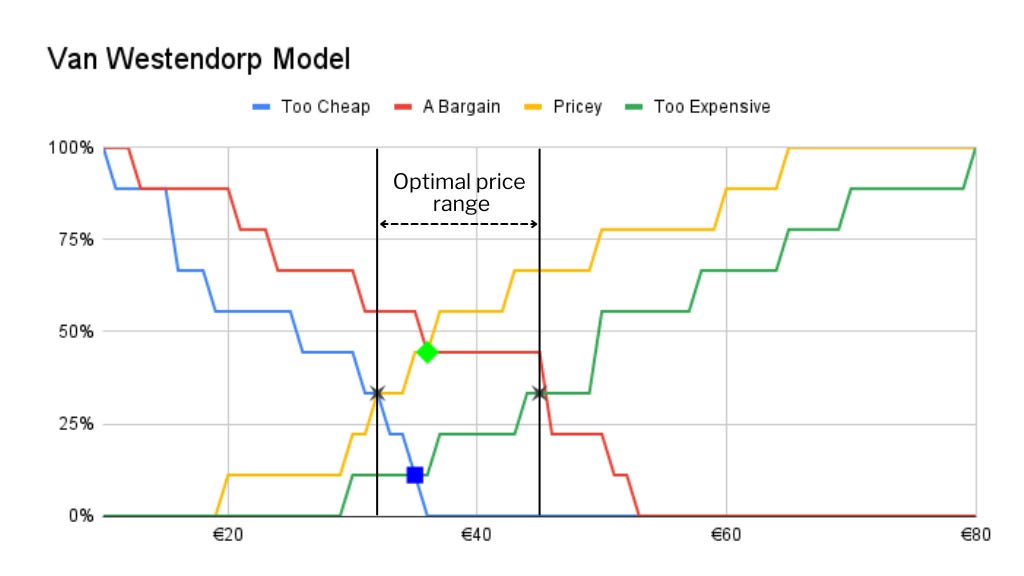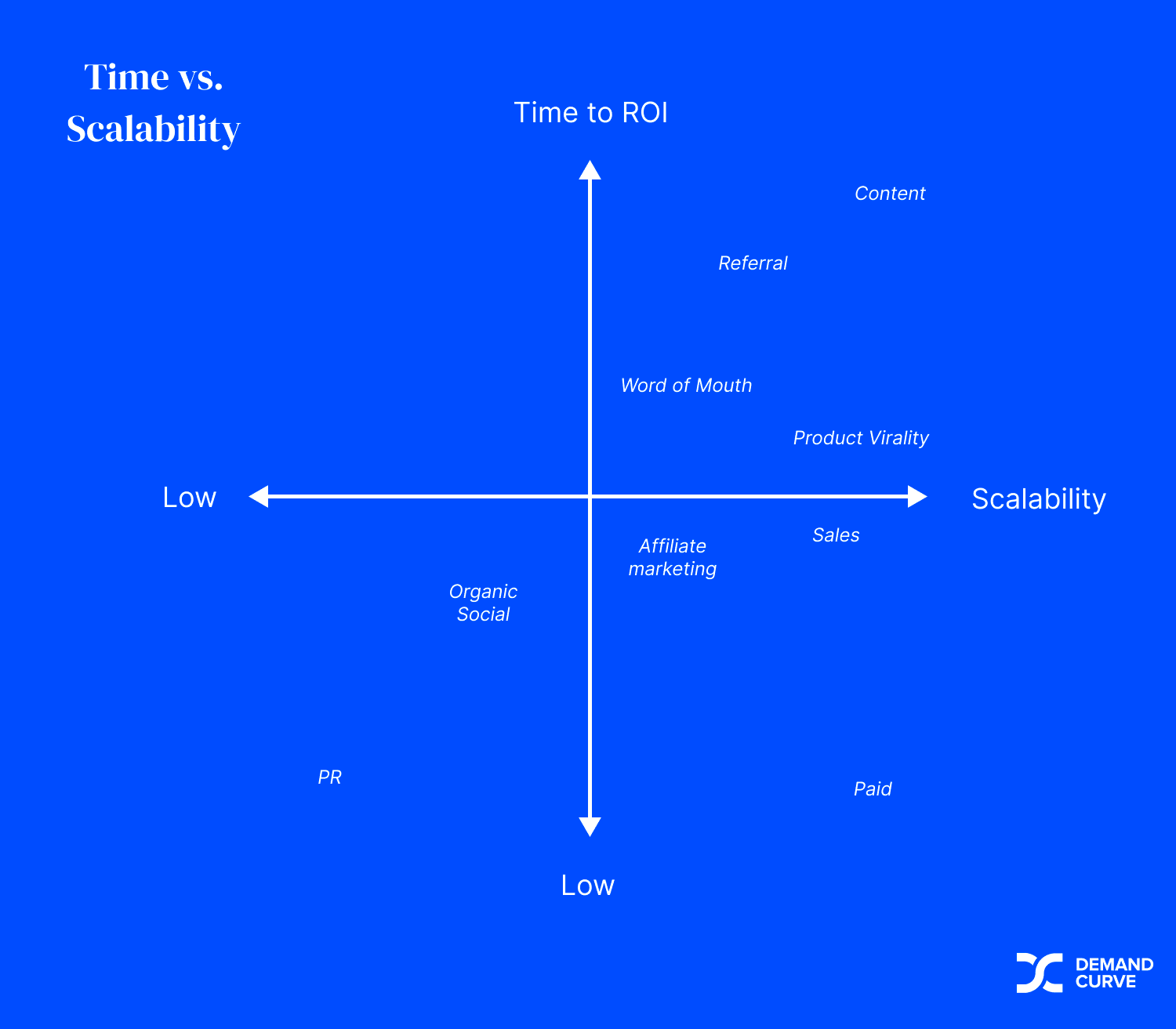International Generalist #4: Four-Day Workweek, Vitamin D, Pricing & Scalable Acquisition Channels
Take your vitamins. And chill on Wednesdays.

Welcome to International Generalist, a newsletter about all things startups, health and becoming a more effective person.
Today, we’ll cover:
- What many people are getting wrong about the four-day workweek
- A vitamin D experiment that has helped me feel much better
- A way to determine the ideal price for your product
- The distinction between scalable and unscalable marketing channels
Let’s dive in.
[1] Four-Day Workweek, but with Wednesdays off
The four-day workweek has been all the rage ever since the pandemic hit (here’s a good breakdown in case you missed it). Results have been a mixed bag, but the overall consensus is that a workweek corresponding to the „100:80:100“ model - 100% of pay for 80% of time worked, but with commitment to maintain 100% of output - seems to lead to reduced stress, higher work-life balance and overall employee well-being. Productivity losses were only minor, if at all.
On the surface, this makes sense. Parkinson’s Law states that work takes as long as you allocate to it, so allocating less time to work will lead to increased productivity per hour - as everybody facing a tight deadline knows.
Now here’s where I believe most get it wrong:
Taking Friday off, when working a four day week.
I believe one should take Wednesdays off instead.
Here’s why:
- Fridays are usually the most unproductive days because we’re exhausted from a long week. If you take Wednesdays off instead, Friday will only be the second day you’ve worked in a row - making you much fresher.
- Mental stress is significantly reduced: Monday passes and on Tuesday evening, you can already relax - because Wednesday is off. When you get back to work on Thursday, the weekend is just around the corner.
- Humans cycle when it comes to relaxation: in strength training, you rarely want to take three days off in a row; maximally, two and ideally you follow a schedule where you train 2-3 days, take 1 day off, train another 2 days, take 1 day off again. Why not do the same for mental work?
I’ve done a total of six weeks with Wednesdays off, and my productivity was sky-high. I got at least as much done as I normally do, and had much less stress on weekends as I got all my chores done on Wednesdays.
Action point: try taking Wednesday off instead of Friday.
Two more thoughts on this:
- Welcome to the Jungle did an interesting study on this back in 2019 and concluded that employees may take either Wednesday or Friday as their off day. The report is definitely worth reading and shows that the four-day workweek is not as easy as it sounds, but still beneficial.
- Of course, this doesn’t apply to everyone: shift workers, waiters, nurses, doctors etc all cannot go to the four-day workweek. Please keep in mind that if you consider having a four-day workweek at all (or, as a matter of fact, can work from home), you are already in a quite privileged position!
[2] My most recent Vitamin D experiment
Note: I am not a medical doctor nor do I pretend to be one on the internet. Please do your own research and follow the advice of accredited physicians.
Most people are Vitamin D deficient in the winter. Every doctor I know recommends supplementing Vitamin D (at least if you live north of 37° latitude, which is the latitude of Málaga, Spain).
I’ve always been supplementing Vitamin D, sometimes once per day, sometimes less.
Then, I learned that a healthy human generates approximately 10.000 - 20.000 IU of Vitamin D with 30 minutes of sun exposure during the summer, and it is recommended to do so three times per week. Adds up to 30.000 - 60.000 IU over the course of a week, and is supposed to be ideal for health.
I went back and checked the supplements I take - and sure enough, I was taking 2.000 IU per day, and forgot about it every now and then.
Which meant that even though I was taking supplements, I was way below the amount I’d be getting with normal sunlight exposure.
Based on my research, 4.000 IU is the safe upper limit of Vitamin D to take per day (although some sources suggest 2.000 IU). If I take it every day, this gets me to 28.000 IU per week - so close to what I’d be getting with sun exposure with the summer.
So I doubled my dosage, and made a commitment to take it every single day.
The effect?
Besides feeling much better, my recovery scores have been reaching new heights after making this adjustments, leading to an increase of up to 20% in HRV and above levels pre-November.
Action point: If you take Vitamin D, take more. If you don’t - start supplementing asap.
NB: Since Vitamin D supplements simulate sun exposure, you probably want to take them around a time in which you’d be getting sun exposure (i.e. not late at night), as they might mess with your sleep otherwise.
[3] Determining the ideal price for your product
Pricing is hard. So hard, in fact, that there are management consultancies dedicated solely to this topic.
It also is arguably the biggest lever you can have on revenue growth.
As a startup, you likely cannot afford expensive consultancies. But just eyeballing your price point and hope it’ll work out doesn’t cut it, either.
Here’s a strategy that I learned during my time at EF and recently stumbled upon again: the Van Westerdorp Model.
It’s simple. Ask your (potential) customers four questions:
- At what price would it be so low that you start to question this product’s quality?
- At what price do you think this product is starting to be a bargain?
- At what price does this product begin to seem expensive?
- At what price is this product too expensive?
Plot the results, and then look at three points:

- The intersection of „too cheap“ and „pricey“, which marks your lower bound for the optimal price range
- The intersection of „too expensive“ and „a bargain“, which marks the upper bound of the optimal price range
- The intersection of „too cheap“ and „too expensive“, which marks the optimal price point, meaning the price you can charge with the highest confidence.
Now, the model clearly has its limitations, but it’s a test that any startup (or established company, for that matter) can do. I’ve done it a few times for different products, and the results have worked decently well.
Action point: next time you challenge your pricing, use the Van Westerdorp Model.
[4] Scalable vs. Unscalable Acquisition Channels
Marketing channels are plenty. But there are less than you think that are truly scalable.
Scalable channels have two properties:
- High volume: you can reach a lot of people there.
- Componding/looping effects: they have a self-fueling mechanism that allows you to repeatedly invest the outputs of the channel into acquiring more customers.
Demand Curve (where I first learned about this concept and who write a fantastic newsletter) illustrates this in the following graphic:

There are really only four scalable channels: content, vitality, sales, and paid marketing.
This isn’t to say that unscalable channels are bad. They can help you get off the ground or make a splash.
But you need to identify at least one scalable channel to drive your acquisition.
Two caveats here:
- Sales is also a scalable channel, as selling your product allows you to reinvest the returns into more salespeople (assuming you generate recurring revenues, that is).
- Paid Marketing has negative economies of scale (the more you scale it, the more expensive per unit it becomes), so its scalability isn’t as high as the other three channels.
Action Point: identify your scalable channel, and double down on it.
To recap:
- In a four-day workweek, take Wednesdays off.
- Increase your Vitamin D intake to up to 4.000 IU.
- Set your price point according to the Van Westerdorp Model.
- Identify your best scalable acquisition channel and double down on it.
Which action point helped you the most? Please let me know in the comments.
Thank you for reading. If you feel like this post has helped you in any way, share this with a friend and - if you haven’t done so - subscribe. I currently have 158 (+ 4 since last newsletter) subscribers, so each additional one means a lot!
Dominik Nitsch Newsletter
Join the newsletter to receive the latest updates in your inbox.


